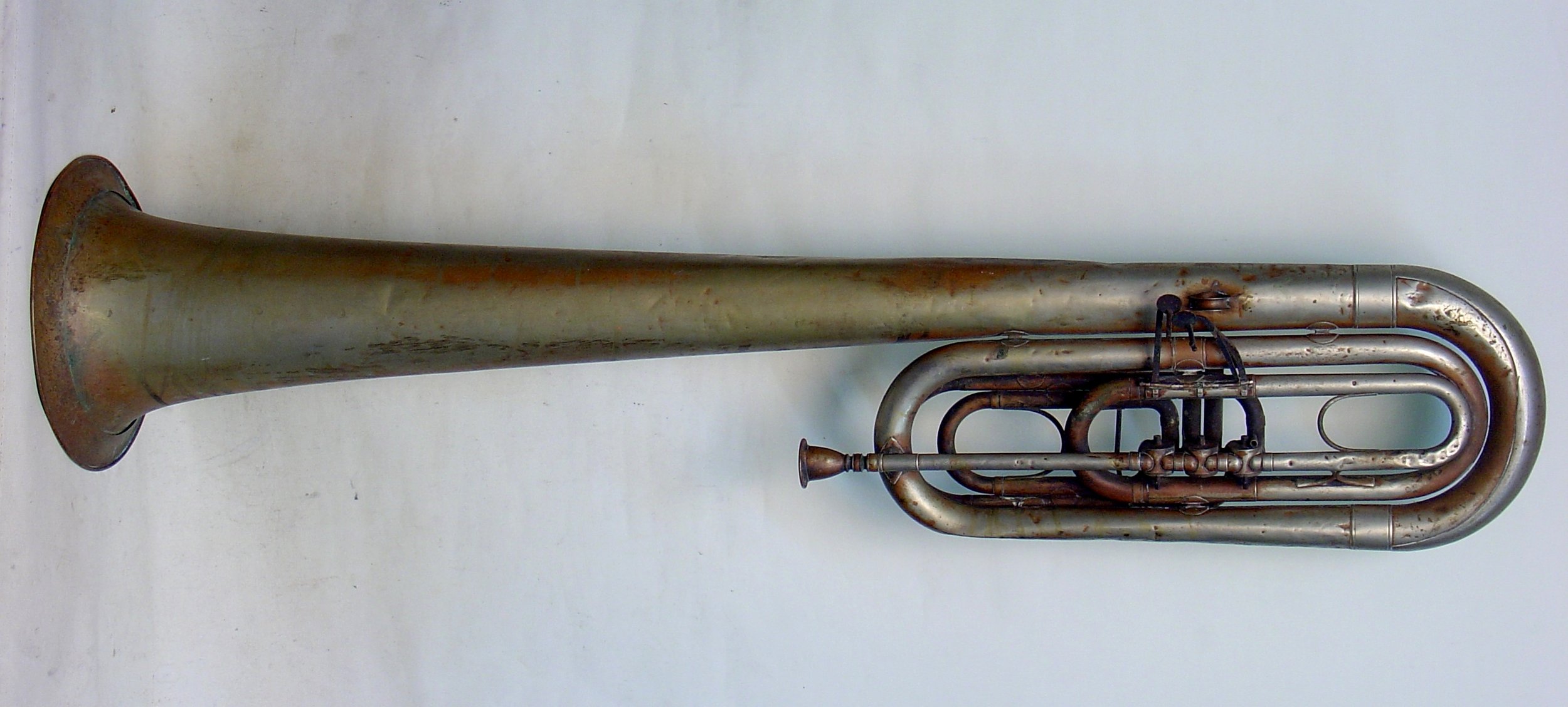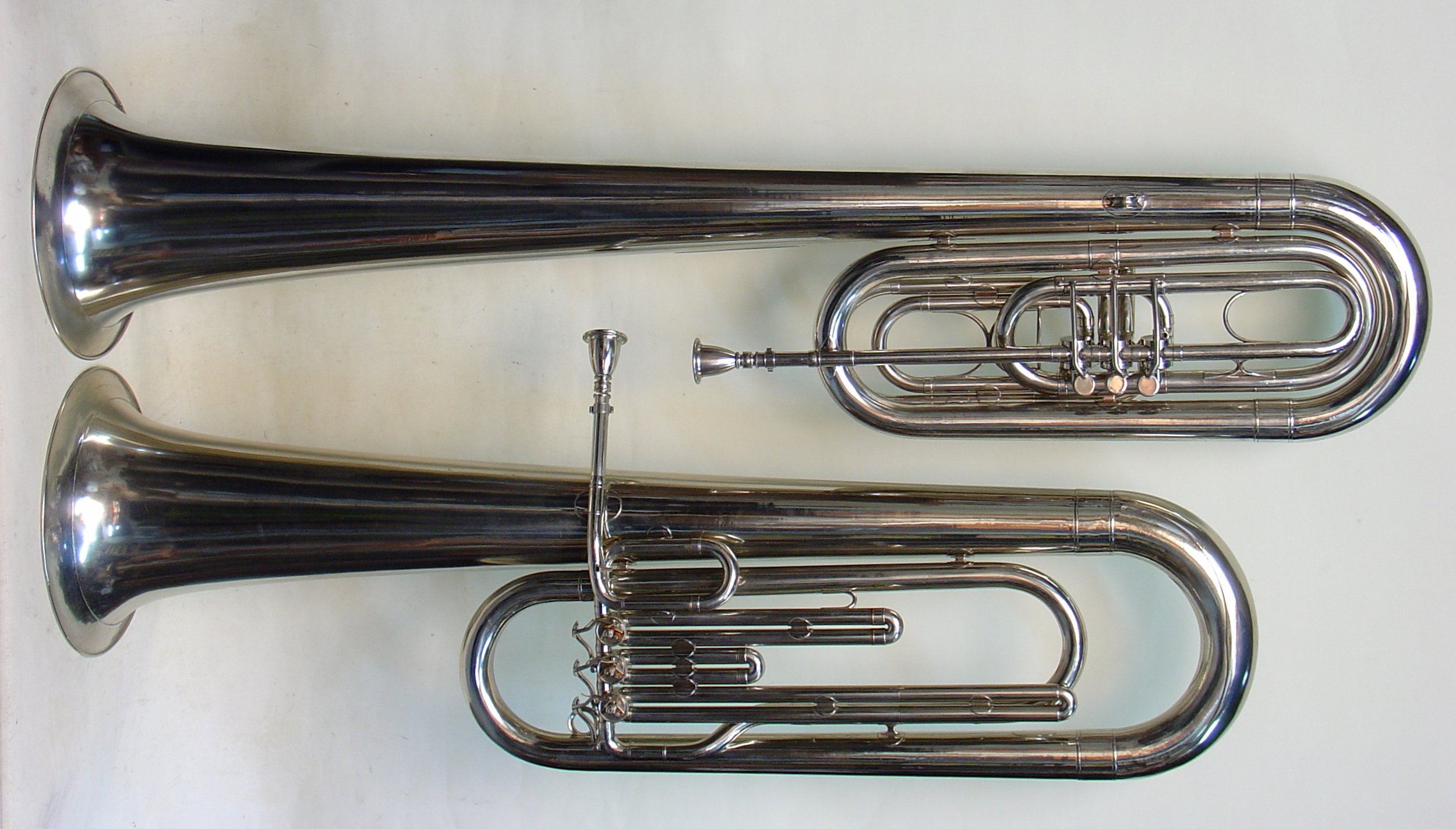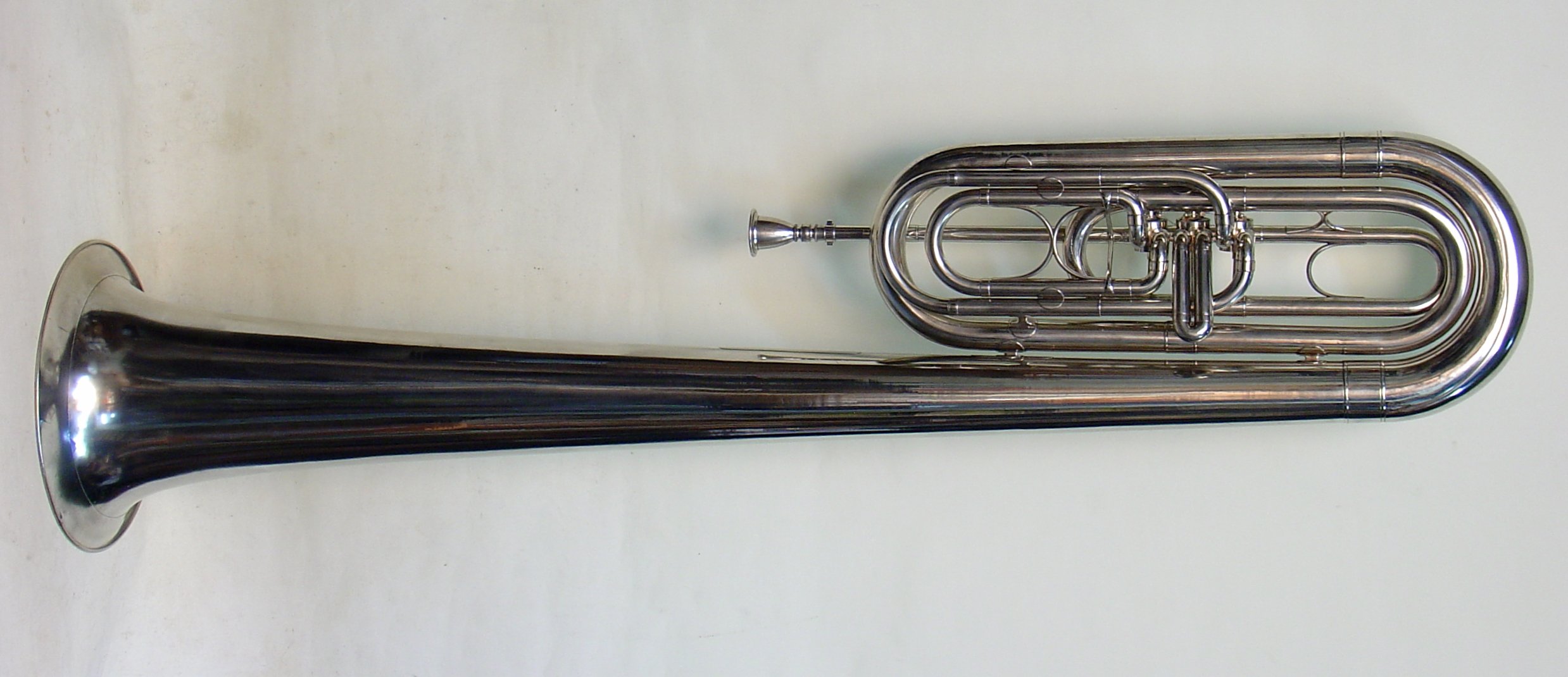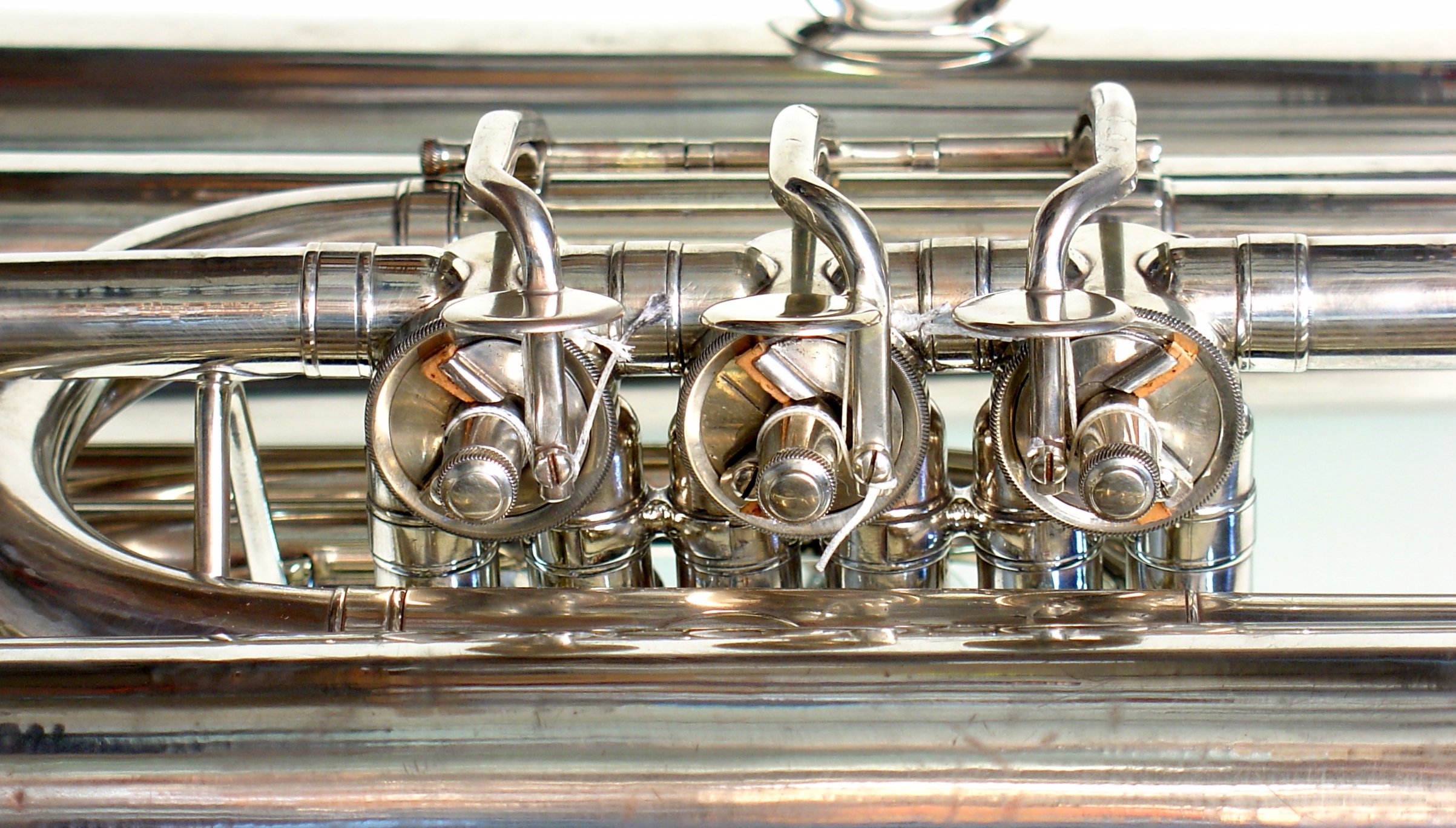Isaac Fiske Tuba Restoration
This was one of the most extensive and expensive restoration projects of my career but more interesting and significant is the uniqueness of this instrument. We should all feel thankful that its new owner Steve Ward has stepped up and paid for this, enabling us to better appreciate its historical context.
Very early Fiske Eb tuba before restoration.
Missing important valve parts.
There are only a few examples known of Fiske Eb tubas with the bell over the shoulder. Isaac Fiske made these between the early 1850s and about 1870, including at least 5 distinct designs. Four of these are illustrated in Fiske's 1861 and 1868 catalogs and this example predates those. When I first saw the Fiske upright tuba, seen in the last photo below, I determined that it was the earliest that I had seen. The two instruments are roughly the same basic tuba in two different shapes, the bells are surely made on the same mandrel and the bore measurement through the valves is the same.
Two early Fiske tubas, both dating from the mid to late 1850s.
All of the later Fiske tubas that I have seen have a larger bore and bell and the aforementioned catalogs describe them as being "calibre somewhat larger than ordinary Contra Bass Tubas" and "extra large calibre". Most likely, Fiske was only making these smaller tubas in the 1850s and you have to realize that the typical American bandsman of the time had probably not seen any brass instrument larger than a bass ophicleide.
Back side of restored Fiske tuba.
I've included the next photo to illustrate an important difference between these two tubas. The rotor on the left is from the upright tuba and the one on the right is from this restoration project. All of Fiske's rotary valve instruments that I have seen until now have the former style of valve rotor. They have the male threads on the stem to receive a nut to retain the stop arm and have a web enclosing the bore at the middle. Also, notice that the earlier rotor has a silver sheet inserted in a slot, making the barrier between the ports as thin as possible. What isn't obvious to the naked eye, is that the body of the early valve is tapered. All others by Fiske in my experience are cylindrical, a feature that was unique to these instruments in that time. All other makers, to my knowledge, would machine the casings and rotors until they almost fit and hand lap them to a perfect fit. Fiske's cylindrical valves would have to be machined to an almost perfect fit, with little or no lapping needed.
Valve rotor on left from late 1850s and earlier rotor on right.
We don't know where Fiske learned to make brass instruments. The only two likely scenarios would have been to copy instruments that he had access to by devising his own techniques or to hire a worker that already had experience in a maker's shop in Germany or France or even one of the Boston makers. His mechanical designs were so unique, that I tend to lean towards believing the former, although perhaps he did hire a German maker to create his earliest valve assemblies before changing the design to suit his own sensibilities. Unfortunately we will probably never know.
Fiske designed a number of differing lever mechanisms for his rotary valves, this one being unique but similar to later over-the-shoulder tubas, culminating in his very famous push rod actuated rotary valves that he called "key pistons". I have presented this long winded discussion to help you understand why I believe that this is among the earliest instruments made by Isaac Fiske that we know of, probably dating from the early 1850s.
Unique valve lever design.
Back to the restoration: this included the usual removal of dents and otherwise repairing what can be repaired, but also making all of the missing parts. These were: one valve rotor, one lever and all of the other removable valve parts. Being all nickel silver, I am very fortunate to have that stock on hand for such jobs and I made the parts to match the design of all other Fiske instruments, not knowing for sure if that is how the originals appeared.
I am quite sure that the extant mouthpiece is original to this tuba, although it was missing its mouthpipe shank and I made a guess as to its length based on the high pitch tuning of the instrument. This is a beautiful playing tuba, producing a very sweet sound. The intonation may be slightly weaker than Fiske's later tubas, but it is quite a treasure. It is 52" long, the bell rim diameter is 11 1/2" and the bore measures .588".








